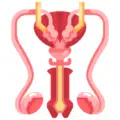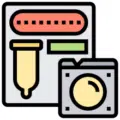by Julia Jarrett, Doctor of Pharmacy Candidate, and Stuart T Haines, PharmD, BCPS, BCACP, University of Mississippi School of Pharmacy

The North American Menopause Society (NAMS) is a nonprofit, multidisciplinary organization promoting the health and quality of life of women experiencing menopause.[1] In June 2023, NAMS released a position statement on the use of non-hormonal therapy for vasomotor symptoms experienced during menopause.2
Clinical Practice Guidelines We Can Trust was developed by the National Academy of Medicine in 2011 to identify optimal approaches in crafting clinical practice guidelines and assist organizations in enhancing objectivity, scientific validity, and consistency during the guideline development process.3 This report suggested eight standards that should be assessed when evaluating if clinical practice guidelines are trustworthy. Table 1 assesses the NAMS position statement adherence to these best practices recommendations.
Table 1: Adherence of 2023 NAMS Position Statement to the National Academy of Medicine’s Recommendations for Clinical Practice Guidelines
| Clinical Practice Guidelines We Can Trust | 2023 NAMS Position Statement | Reasoning |
| Transparency | ✓ | Development and funding of the position statement were detailed explicitly and publicly in the statement acknowledgments. |
| Conflicts of Interest (COI) | ✘ | The financial relationships of the panel members were not disclosed in the position statement. |
| Group Composition | ✘ | The position statement was developed by a multidisciplinary panel consisting of representatives of the NAMS Board of Trustees, clinicians (physicians and nurses), and researchers who were deemed “experts” in women’s health. The position statement did not disclose if the panel consisted of other health professional disciplines or had a patient advocate. |
| Clinical Practice Guideline-Systematic Review Intersection | ✘ | The position statement was written after an extensive review of the pertinent literature and included key points identified during the review process; however, it was not based on a systematic review. |
| Evidence Foundations and Rating the Strength of Recommendations | ✓ | Recommended treatments were articulated in a standardized form detailing precisely what was recommended for vasomotor symptom treatment. |
| Articulation of Recommendations | ✓ | Recommended treatments were articulated in a standardized form detailing precisely what was recommended for vasomotor symptom treatment. |
| External Review | ✘ | External reviewers were not explicitly stated in the position statement beyond review and approval by the NAMS Board of Trustees. |
| Updates | ✘ | The position statement was developed as an extension of the previous statement (2015) and included updated research and recommendations; however, there is no stated plan for systematically and periodically updating this guideline. |
The position statement was developed by the Non-hormone Therapy Position Statement Advisory Panel consisting of representatives of the NAMS Board of Trustees to provide an evidence-based review of the literature published since the 2015 position statement. An advisory panel of clinicians and research experts in women’s health assessed recent literature to determine what non-hormonal treatments to recommend and not recommend for women who are not candidates for hormone therapy due to contraindications or personal preference.
The guideline recommendations are based on the level of evidence and are categorized as follows:
- Level I – Good and consistent scientific evidence
- Level II – Limited or inconsistent scientific evidence
- Level III – Consensus or expert opinion
The review and recommendations are divided into five sections:
- Lifestyle Modification
- Mind-body techniques
- Non-hormonal therapy
- Dietary supplements
- Acupuncture, other treatments, and technologies
Lifestyle Modification
- Weight loss – Level II-III; recommended
Research outcomes reveal a strong connection between behavioral interventions promoting weight loss and a decline in vasomotor symptoms. In the reviewed study, women randomized to weight loss displayed more substantial reductions in questionnaire-reported hot flushes (number of hot flushes decreased by -63 in 2 weeks) compared to women in the control group (-28.0; P = 0.03) with a significant correlation between weight reduction and hot flush reduction (correlation coefficient, r = 0.47, P = 0.006).4 This recommendation was assigned level II-III, due to the majority of the supporting trials being small pilot studies, nonrandomized, or post hoc analyses of studies conducted for a different purpose.
Lifestyle modifications not recommended included cooling techniques, avoiding triggers, exercise/yoga, and a healthy diet due to poor or insufficient evidence.
Mind-body techniques
- Cognitive behavioral therapy – Level I; recommended
- Clinical hypnosis – Level I; recommended
Cognitive behavioral therapy (CBT) has demonstrated a significant reduction in the perceived severity of vasomotor symptoms. Psychoeducation includes educating women on the physiology of vasomotor symptoms and how thoughts and emotions affect the perception of physical sensations. In one randomized control trial, MENOS 1, results showed that compared to standard care, CBT resulted in a substantial decrease in problem ratings at 9 weeks post-randomization (mean difference -1.67, 95% CI -2.43 to -0.91; p<0.0001), and these improvements were sustained at the 26-week mark (mean difference -1.76, -2.54 to -0.99; p<0.0001).5 Studies included in this recommendation all employed usual-care controls and supported CBT alleviating bothersome vasomotor symptoms.
Clinical hypnosis involves a deeply relaxed state and individualized mental imagery and suggestion. The analyzed trial revealed that from baseline to week 12, clinical hypnosis effectively reduced hot flushes and improved mood and sleep quality with a substantial mean reduction in hot flush score, with a 74.16% decrease, while the control group experienced a modest reduction of 17.13% (P < 0.001; 95% CI, 36.15-49.67).6
Mind-body techniques not recommended included mindfulness-based stress reduction, relaxation, and paced respiration due to limited sample sizes, lack of control groups, and poor results.
Non-hormonal Therapies
- SSRIs and SNRIs – Level I; recommended
- Gabapentinoids – Level I; recommended
- Neurokinin B antagonists – Level I; recommended
- Oxybutynin – Level I-II; recommended
Selective serotonin reuptake inhibitors (SSRIs) and serotonin norepinephrine reuptake inhibitors (SNRIs) both have evidence supporting mild to moderate improvements in vasomotor symptoms. Paroxetine, escitalopram, citalopram, venlafaxine, and desvenlafaxine have been shown to significantly reduce vasomotor symptoms in several large, randomized controlled trials with symptomatic women.
Paroxetine is the first non-hormone therapy approved for the treatment of vasomotor symptoms. Researchers assessed a recent systematic review and meta-analysis confirming the safety and efficacy of paroxetine treatment. Five articles with six randomized control trials were included, all of which demonstrated that paroxetine significantly reduced the frequency of hot flushes by 8.86 per week (95% confidence interval (CI) 5.69-12.04, P < 0.00001, I(2) = 83%) at week 4 and 7.36 per week (95% CI, 4.25-10.46, P < 0.00001, I(2) = 62%) at week 12.7 The quality of the evidence on the effect of paroxetine for vasomotor symptoms was moderate, but paroxetine still remains a recommended treatment strategy to alleviate vasomotor symptoms.
Escitalopram 10 mg to 20 mg once daily doses have been assessed to determine their effectiveness in alleviating the frequency and severity of vasomotor symptoms. In a multicentered, randomized, double-blind, placebo-controlled trial taking place over the course of 8 weeks, the mean difference in hot flush frequency reduction from baseline was 1.41 (95% CI, 0.13-2.69) fewer hot flushes per day at week 8 among women taking escitalopram (P < .001), with mean reductions of 4.60 (95% CI, 3.74-5.47) and 3.20 (95% CI, 2.24-4.15) hot flushes per day in the escitalopram and placebo groups.8
Researchers analyzed a randomized, double-blind, placebo-controlled clinical trial to evaluate the efficacy of venlafaxine and citalopram compared to placebo to treat sleep disturbances caused by vasomotor symptoms. Using the Pittsburgh sleep quality index (PSQI), results demonstrated that the citalopram and venlafaxine group scores were not significantly different from baseline (p = 0.19), but the score in both groups was significantly lower compared with the placebo group after treatment (p = 0.01).9 The trial also determined that the frequency of hot flushes per day was reduced significantly by both citalopram and venlafaxine (p < 0.05), although it was more reduced by citalopram than venlafaxine (p = 0.03).9 The severity of hot flushes in both venlafaxine and citalopram groups was significantly lower in comparison with placebo (p = 0.02), but there was no significant difference between the two active treatments (p = 0.84).9
The recommendation for venlafaxine is based on a randomized, double-treatment control trial determining the efficacy and tolerability of low-dose estrogen and venlafaxine. The results of the assessed trial showed that compared with baseline, the mean vasomotor symptom frequency at week 8 decreased to 3.9 (95% CI, 2.9-4.9) vasomotor symptoms per day (52.9% reduction) in the estradiol group, to 4.4 (95% CI, 3.5-5.3) vasomotor symptoms per day (47.6% reduction) in the venlafaxine group, and to 5.5 (95% CI, 4.7-6.3) vasomotor symptoms per day (28.6% reduction) in the placebo group.10
While assessing the use of desvenlafaxine in moderate to severe vasomotor symptoms, studies showed a pooled change of moderate and severe hot flushes frequency reduced SMD of -0.49 (95% CI -0.91 to -0.07) in desvenlafaxine 100 mg and -0.36 (95% CI -0.54 to -0.19) in desvenlafaxine 150 mg at week 12. Desvenlafaxine 100 mg reduced moderate and severe hot flushes frequency SMD of -0.74 (95% CI -1.05 to -0.44) within 26 weeks.11
Sertraline12 and fluoxetine13 have both been shown to improve symptoms, but the results were statistically insignificant and, therefore, these agents are not recommended.
Several trials have suggested that gabapentin doses of 900 mg to 2,400 mg per day in divided doses have improved the frequency and severity of vasomotor symptoms. In two of the trials assessed, gabapentin was comparable to hormone replacement therapy (71% vs 72%, respectively, p=0.63) in decreasing hot flush composite scores at the end of 12 weeks and in decreasing hot flush frequency at the end of 8 weeks (58.9% vs 70.1%, p>0.05).14 Although gabapentin is FDA-approved as an antiepileptic drug used to manage postherpetic neuralgia and partial seizures, it is a recommended option for the management of vasomotor symptoms.
Fezolinetant is the first and only FDA-approved neurokinin B antagonist for managing moderate to severe vasomotor symptoms caused by menopause. Approved by the FDA in May 2023, fezolinetant also improves quality of life and VMS-related distress, nocturnal awakenings, and sleep quality. Studies have shown that mean reduction from baseline at week 2 in moderate to severe hot flash frequency was 37% in the placebo group and, respectively, 59% (P = 0.155), 84% (P < 0.001) and 66% (P = 0.022) in the 100 mg, 150 mg, and 300 mg fezolinetant groups. Waking due to night sweats was reduced by 55% (P = 0.135), 81% (P < 0.001), and 63% (P = 0.031) in the fezolinetant groups and 32% in the placebo group.15
Several studies have demonstrated that oxybutynin doses ranging from 2.5 mg to 5 mg twice daily have significantly improved moderate to severe vasomotor symptoms. Patients on both oxybutynin doses reported greater reductions in the weekly hot flush score (5 mg twice a day: -16.9 [SD 15.6], 2.5 mg twice a day: -10.6 [SD 7.7]), placebo -5.7 (SD 10.2); P < .005 for both oxybutynin doses vs placebo), hot flush frequency (5 mg twice a day: -7.5 [SD 6.6], 2.5 mg twice a day: -4.8 [SD 3.2], placebo: -2.6 [SD 4.3]; P < .003 for both oxybutynin doses vs placebo), and improvement in overall quality of life.16 However, long-term use of anticholinergic drugs such as oxybutynin may be associated with cognitive decline (level I-II recommendation).
Non-hormonal therapies that were not recommended for managing vasomotor symptoms included pregabalin, clonidine, and suvorexant. Pregabalin and clonidine are not recommended treatments due to adverse events and controlled substance regulations for prescribing pregabalin. Suvorexant is not recommended due to limited data.
Dietary Supplements
- None
There are currently no recommended dietary supplements for the management of vasomotor symptoms. Given the lack of evidence-based research supporting the use of any over-the-counter supplements and herbal therapies, no recommendations can be made at this time.
Acupuncture, Other Treatments, and Technologies
- Stellate ganglion block – Level II-III; recommended
Stellate ganglion blockade is most commonly used for pain management in patients experiencing migraines or complex regional pain syndrome. Recently, stellate ganglion blockade has been studied as a potential treatment option for vasomotor symptoms in both menopausal women and those with breast cancer. Evidence from the assessed studies suggests that stellate ganglion blockade could potentially alleviate moderate to severe vasomotor symptoms. The findings indicate that in specific cases, hot flash scores were reduced by 64% (95% CI -74% to -49%) from baseline at week 1 and by 47% (95% CI -62% to -27%) at week 24.17 However, more research is needed to replicate these results.
Existing evidence does not support the use of acupuncture, chiropractic interventions, and calibration of neural oscillations for the treatment of vasomotor symptoms.
Although hormone therapy is the recommended first-line treatment for women experiencing vasomotor symptoms, it is important to recognize that not all women have the opportunity or desire to use hormone therapy for alleviating menopausal symptoms. Clinicians should be knowledgeable about the non-hormone therapies available for treatment and the level of evidence to support their use.
[1] Founded in 1989, NAMS began releasing Menopause, a peer-reviewed scientific journal in 1994 to provide a forum for clinical research and practice guidelines on multiple aspects of menopause

- The North American Menopause Society. www.menopause.org [internet] Accessed 26 Oct, 2023
- Shufelt, Chrisandra L. MD, MS, FACP, NCMP; Brown, Vivien MDCM, CCFP, FCFP, NCMP; Carpenter, Janet S. PhD, RN, FAAN; Chism, Lisa Astalos DNP, APRN, NCMP, FAANP; Faubion, Stephanie S. MD, MBA, FACP, NCMP, IF; Joffe, Hadine MD, MSc; Kling, Juliana M. MD, MPH, NCMP, FACP, IF; Soares, Claudio N. MD, PhD, FRCPC, MBA; Thurston, Rebecca C. PhD, FABMR. The 2023 nonhormone therapy position statement of The North American Menopause Society. Menopause 30(6):p 573-590, June 2023. | DOI: 10.1097/GME.0000000000002200
- Institute of Medicine (US) Committee on Standards for Developing Trustworthy Clinical Practice Guidelines; Graham R, Mancher M, Miller Wolman D, et al., editors. Clinical Practice Guidelines We Can Trust. Washington (DC): National Academies Press (US); 2011. Available from: https://www.ncbi.nlm.nih.gov/books/NBK209539/ doi: 10.17226/13058
- Thurston RC, Ewing LJ, Low CA, Christie AJ, Levine MD. Behavioral weight loss for the management of menopausal hot flashes: a pilot study. Menopause 2015;22:59–65. doi: 10.1097/GME.0000000000000274
- Mann E, Smith MJ, Hellier J, et al. Cognitive behavioural treatment for women who have menopausal symptoms after breast cancer treatment (MENOS 1): a randomised controlled trial. Lancet Oncol 2012;13:309–318. doi: 10.1016/S1470-2045(11)70364-3
- Elkins GR, Fisher WI, Johnson AK, Carpenter JS, Keith TZ. Clinical hypnosis in the treatment of postmenopausal hot flashes: a randomized controlled trial. Menopause 2013;20:291–298. doi: 10.1097/gme.0b013e31826ce3ed
- Wei D, Chen Y, Wu C, et al. Effect and safety of paroxetine for vasomotor symptoms: systematic review and meta-analysis. BJOG 2016;123:1735–1743. doi: 10.1111/1471-0528.13951
- Freeman EW, Guthrie KA, Caan B, et al. Efficacy of escitalopram for hot flashes in healthy menopausal women: a randomized controlled trial. JAMA 2011;305:267–274. doi: 10.1001/jama.2010.2016
- Davari-Tanha F, Soleymani-Farsani M, Asadi M, Shariat M, Shirazi M, Hadizadeh H. Comparison of citalopram and venlafaxine’s role in treating sleep disturbances in menopausal women, a randomized, double-blind, placebo-controlled trial. Arch Gynecol Obstet 2016;293:1007–1013. doi: 10.1007/s00404-015-3900-1
- Joffe H, Guthrie KA, LaCroix AZ, et al. Low-dose estradiol and the serotonin-norepinephrine reuptake inhibitor venlafaxine for vasomotor symptoms: a randomized clinical trial. JAMA Intern Med 2014;174:1058–1066. doi: 10.1001/jamainternmed.2014.1891
- Sun Z, Hao Y, Zhang M. Efficacy and safety of desvenlafaxine treatment for hot flashes associated with menopause: a meta-analysis of randomized controlled trials. Gynecol Obstet Invest 2013;75:255–262. doi: 10.1159/000348564
- Grady D, Cohen B, Tice J, Kristof M, Olyaie A, Sawaya GF. Ineffectiveness of sertraline for treatment of menopausal hot flushes: a randomized controlled trial. Obset Gynecol 2007;109:823–830. doi: 10.1097/01.AOG.0000258278.73505.fa
- Loprinzi CL, Sloan JA, Perez EA, et al. Phase III evaluation of fluoxetine for treatment of hot flashes. J Clin Oncol 2002;20:1578–1583. doi: 10.1200/JCO.2002.20.6.1578
- Hayes LP, Carroll DG, Kelley KW. Use of gabapentin for the management of natural or surgical menopausal hot flashes. Ann Pharmacother. 2011 Mar;45(3):388-94. doi: 10.1345/aph.1P366. Epub 2011 Feb 22. PMID: 21343402.
- Trower M, Anderson RA, Ballantyne E, Joffe H, Kerr M, Pawsey S. Effects of NT-814, a dual neurokinin 1 and 3 receptor antagonist, on vasomotor symptoms in postmenopausal women: a placebo-controlled, randomized trial. Menopause 2020;27:498–505. doi: 10.1097/GME.0000000000001500
- Leon-Ferre RA, Novotny PJ, Wolfe EG, et al. Oxybutynin vs placebo for hot flashes in women with or without breast cancer: a randomized, double-blind clinical trial (ACCRU SC-1603). JNCI Cancer Spectr 2019;21:pkz088. doi: 10.1093/jncics/pkz088
- Haest K, Kumar A, Van Calster B, et al. Stellate ganglion block for the management of hot flashes and sleep disturbances in breast cancer survivors: an uncontrolled experimental study with 24 weeks of follow-up. Ann Oncol 2012;23:1449–1454. doi: 10.1093/annonc/mdr478





 iForumRx.org is a web-based community of practice designed to inform ambulatory care pharmacy specialists, pharmacy residents, and student pharmacists about high-quality, practice-changing evidence.
iForumRx.org is a web-based community of practice designed to inform ambulatory care pharmacy specialists, pharmacy residents, and student pharmacists about high-quality, practice-changing evidence.